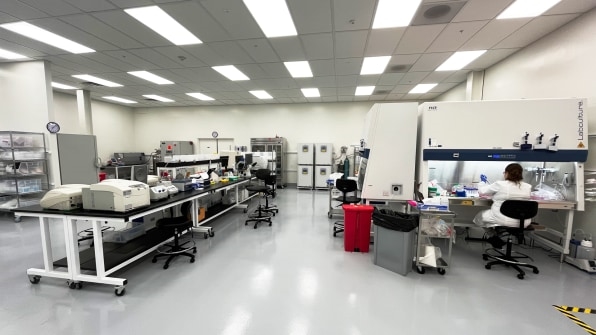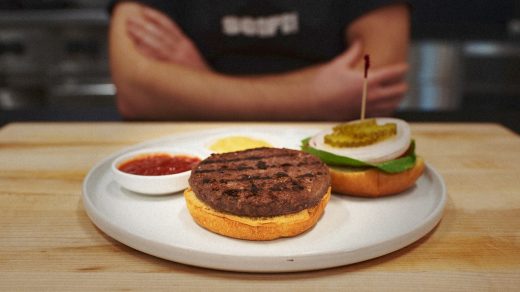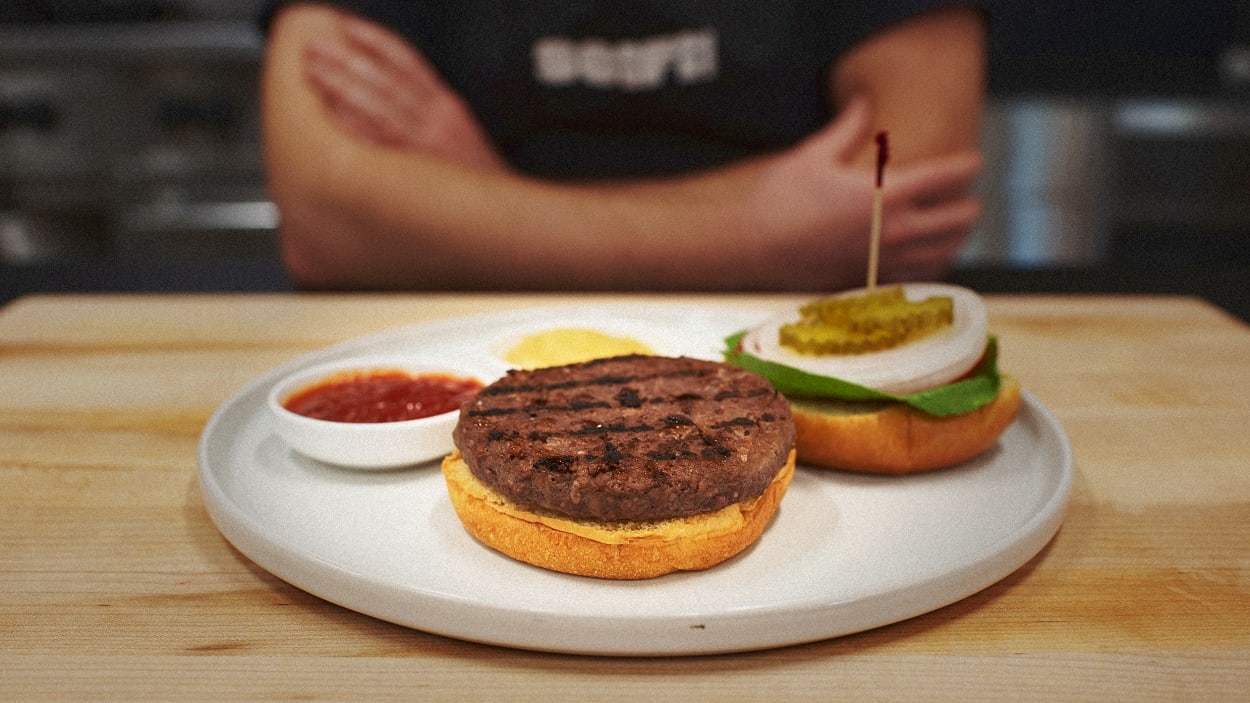Is lab-grown meat actually better for the environment? Here’s how it stacks up
The plant-based boom may have hit a wall. Or so some reports claim, detailing losses among big players like Beyond Meat. Notably, Deloitte research found customers have become warier of the environmental benefits of plant-based over conventional animal meat.
But one Bay Area company is banking on the renewed success of plant-based products—as long as they contain certain meat components. SCiFi Foods has been producing “blended” burgers using its cultured beef cells along with plant-based material. It claims this is the best approach for maximizing taste for real-meat cravers and for scaling up affordably. And a new study from the company underscores the environmental benefits of its product over the age-old patty—while underlining the urgency to manufacture it using renewable energy sources.
The plant-based industry has primarily targeted carnivores who may want to curb meat consumption but not go all-in on vegetarian diets. But “ultimately, for meat eaters, there’s still a gap in terms of the tasting experience,” says Joshua March, SCiFi’s cofounder and CEO, of the market’s current offerings. For SCiFi, enhancing the taste means supplementing its burgers with real beef cells—even if they’re grown in a lab. “You have a pretty dramatic impact on the flavor even with having a minority of the product being cultivated cells,” March says.
What’s more, consumers are still consistently buying meat. That’s environmentally hazardous, when livestock causes 14.5% of greenhouse gas emissions; cattle farming in particular produces methane and takes up half of the land in the U.S. To explicitly show the climate benefits of its lab-grown beef compared to conventional beef, the company commissioned a life-time analysis study. Ohio State researchers compared the environmental impacts of both meats—from raw materials to the final products. March says that while past studies have considered generic cultivated meat cells, none have specifically looked at beef cells.

In July, SCiFi announced it was the first to produce edible beef cells grown in single-cell suspension, using genetic engineering. Beef cells like to grow attached to a surface—“which is fine inside a cow,” March says—but in a lab, they have to each grow individually on tiny beads, which is expensive. SCiFi was able to grow them without that support, so they can float alone in large-scale bioreactor tanks—which the business has suggested will keep production costs down by 1,000 times. Those beef cells form the core of the burger, and are mixed in small quantities with plant-based material: largely soy protein (just as Impossible uses), coconut oil, mushrooms, and oats.
The researchers of the study (which SCiFi donated to, but which was done independently) compared four sustainability impacts of the blended burger with conventional patties—greenhouse gas emissions, land usage, water, and energy. Each area saw dramatically improvements with the lab-grown product: It generated 87% fewer greenhouse gas emissions, 90% less land use, and 96% less water use.
The fourth area, energy demand, showed the least change, at 39%. And when the study also considered a hypothetical burger of 100% cultivated beef, the energy use was about the same as that of conventional beef. Lab-growing meat utilizes a lot of energy: for aerating and mixing in the tanks, and maintaining high temperatures for culturing and cleaning each batch.
But in the lab, compared to the farm, there’s the opportunity to switch to renewable energy; in that case, the emissions toll from energy would be zero. As of now, SCiFi’s lab does run on 100% renewable energy, bought as part of a local East Bay energy plan. But doing that on a commercial scale in the future will be more challenging. “How do we transition animal agriculture, which has all of these other emissions which we can’t control,” March says, “and just electrify it so that we can power it renewably?”
Currently, SCiFi, which has attracted notable investors including a16z, is in the middle of its FDA consultation process; if granted approval, it expects to market its blended patties in late 2024. (Upside Foods obtained the first FDA approval for cell-based meat, for its cultured chicken, in November.) SCiFi still hasn’t decided on a final ratio of cultured cells to plant-based material, but is experimenting with between 5% and 20% (for the study, they used 16.9% cultivated cells).
After that, they plan to gradually increase the ratio of cultured meat in the mix. It’s not feasible at the moment given the high cost of the technology, chiefly the cell components and bioreactors. March also believes no cell-based ground-beef competitor will be able to hit the market 100% cultivated. “While I want that to exist in the world, it’s going to take quite a long time before that’s commercially viable to do any kind of affordable price,” he says.
For now, the study reinforces the fact that SCiFi’s blended burger is more environmentally sound than traditional beef. Like with EVs, it’s going to take an industry-wide transition to get to net-zero. “In many ways what we’re doing with cultivated beef,” he says, “is we’re electrifying the cow.”
(38)



